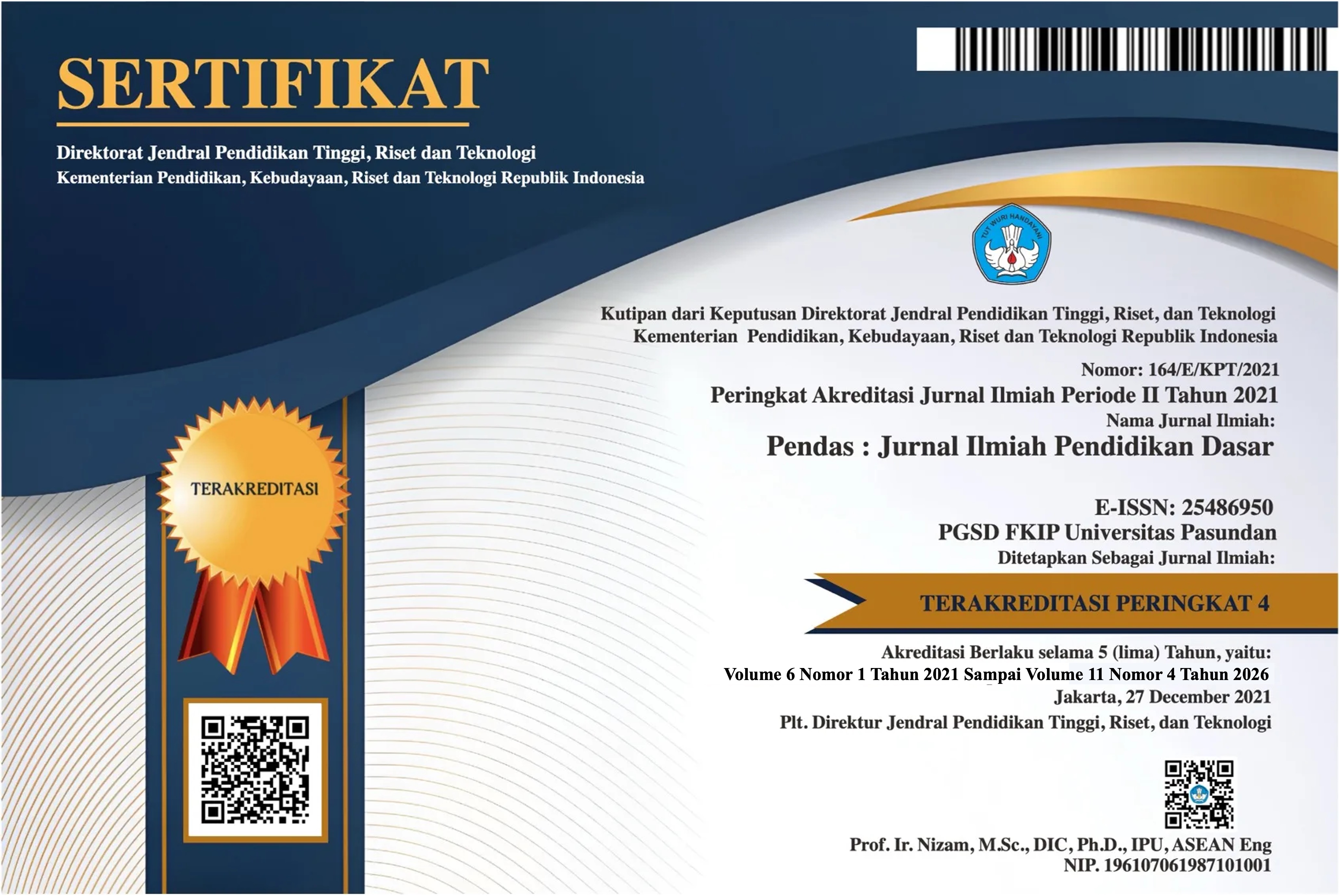IDENTIFIKASI DINI PADA SISWA KELAS II DAN III DENGAN GANGGUAN BELAJAR SPESIFIK DISLEKSIA DI SEKOLAH DASAR
DOI:
https://doi.org/10.23969/jp.v9i2.14257Keywords:
Specific Learning Disorders, Dyslexia, Diagnostic and Statistical Manual of Mental Disorder-V (DSM-V), Guide to the Classification and Diagnosis of Mental Disorders (PPDGJ-III).Abstract
In the process, learning carried out by students does not always run smoothly. There are various factors that influence the student learning process, one of which is the specific learning difficulty of dyslexia. Dyslexia is a condition of learning difficulties in children which focuses on the child's reading ability and affects writing and numeracy skills. Measurements were carried out using a special dyslexia instrument sourced from the Guide to Classification and Diagnosis of Mental Disorders (PPDGJ-III) andDiagnostic and Statistical Manual of Mental Disorder (DSM-V). Early identification focuses on measuring the linguistic, cognitive, psychological, sensori-motor and biological/hereditary abilities of dyslexic subjects. The aim of this research is to identify early symptoms of dyslexia in students in grades II and III of elementary school using an early dyslexia identification instrument. This research uses a case study method with a single case study research design. In this study there were 13 subjects with 4 subjects having the highest probability of suffering from dyslexia based on tests on subjects with the early identification of dyslexia instrument. One of the factors to consider when determining dyslexia cannot be separated from public health conditions. Heredity and biology are one of the biggest factors to be taken into consideration, considering that the heredity factor is inherited by the father's genetics by 46% and by the mother by 33%.Downloads
References
Irdamurni, I., Kasiyati, K., Zulmiyetri, Z., & Taufan, J. (2018). Meningkatkan Kemampuan Guru pada Pembelajaran Membaca Anak Disleksia. Jurnal Pendidikan Kebutuhan Khusus, 2(2), 29-32.
Depkes RI. (1993) Pedoman Penggolongan dan Diagnosis Gangguan Jiwa di Indonesia, Edisi ke-III (PPDGJ-III). Direktorat Jenderal Pelayanan Medik.
Murti, Apriliya Manggulaning, dkk (2015). “Hubungan Kecerdasan Emosi Dan
NINDS. (2011). NINDS Dyslexia Information. National Institute of Neurogical Disorders and Stroke . Retrieved from http://www.ninds.nih.gov/disorders/dyslexia/dyslexia,htm
American Psychiatric Association. (2013). Diagnostic and Statistical Manual of Mental Disorders Fifth Edition (DSM-5). London: American Psychiatric Publishing.
Syahroni, I., Rofiqoh, W., & Latipah, E. (2021). Ciri-Ciri Disleksia pada Anak Usia Dini. Jurnal Buah Hati, 8(1), 62-77.
Raharjo, T., & Ahyani, L. N. (2008). Identifikasi Kesulitan Belajar pada Anak Pendidikan Usia Dini, 1-9
Affandi, A., & Pratiwi, U. H. (2014). Faktor-Faktor Penyebab terjadinya Autisme pada Anak Di Kota Cirebon. Tunas Medika Jurnal Kedokteran & Kesehatan, 1(2).
Prasetyowati, P., & Sadiman, S. (2016). SINDROM ANTIFOSFOLIPID PADA KEGUGURAN BERULANG. Jurnal Kesehatan Metro Sai Wawai, 8(1), 45-50.
Mulyadi, H. (2010). Diagnosis kesulitan belajar dan bimbingan terhadap kesulitan belajar khusus. Yogyakarta: Nuha Litera.
Sulistiana, D., & Muqodas, I. (2016). Upaya Bimbingan Bagi Siswa Underachiever. Metodik Didaktik: Jurnal Pendidikan Ke-SD-an, 10(1).
Jatmiko, A. (2016). Memahami dan Mendidik Anak Disleksia. In Annual Conference on Islamic Early Childhood Education (ACIECE) (Vol. 1, pp. 159-166).
Downloads
Published
Issue
Section
License
Copyright (c) 2024 Pendas : Jurnal Ilmiah Pendidikan Dasar

This work is licensed under a Creative Commons Attribution 4.0 International License.



















